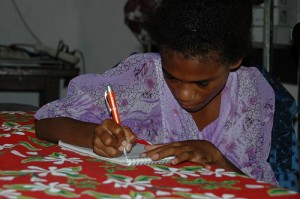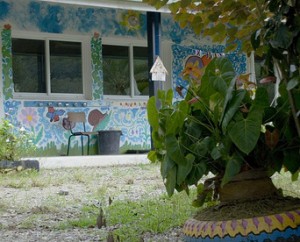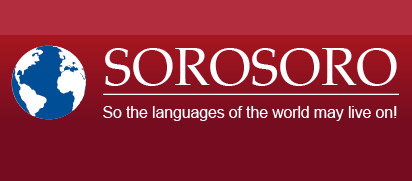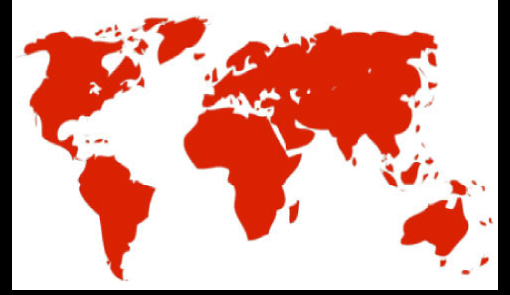Print  |
|


Kanak languages at school in New Caledonia: a long process
Posted by Jacques Vernaudon on September 30, 2011
By Jacques Vernaudon, senior lecturer in Oceanic linguistics, University of New Caledonia.

New Caledonia – Photo : Sekundo (cc)
New Caledonia counts around thirty vernaculars, the Kanak languages, spoken by a total of some 70,000 people, according to the 2009 census (total population: 245,580). The greater ones are spoken by a few thousand people, the smaller by under a hundred.
They all belong to the Austronesian language family, one of the largest language families in the world, including 1,000 to 1,200 languages. These languages stem from one and the same Mother language believed to have been spoken over 5,500 years ago on the southern coasts of China and Taiwan. From this migration source, the first speakers first populated the Southeast Asian islands and peninsulas before continuing their expansion all the way to Madagascar in the West, and to most of the Pacific islands in the East. Nevertheless, in spite of their common origin, the Kanak languages remain very diverse in respect to either vocabulary, sound, or grammar.
Belated recognition
Long underrated, threatened with extinction when severe depopulation followed the first encounters with the Western world in the 18th century, the Kanak languages have been formally banned from the education system from the beginning of the colonization up to 1984. Not until a movement for the political emancipation of indigenous populations emerged at the end of the 20th century did they eventually fall under gradual institutional recognition.
Now recognized as “languages of education and culture” (1999 New Caledonia organic law), they entered the public primary school programs voted in 2005 by the Congress of New Caledonia.
Yet despite available resources the implementation of these courses and their supervision still suffer numerous factors of inertness, mainly due to:
– the structural complexity of the Caledonian education system,
– ideological resistance: the teaching of Kanak being opposed to a priority to teach French “first and foremost”, sometimes even English.
– repression of the Caledonian plurilingual reality, whose loose representation may explain certain attitudes, whether at family, teaching staff or authority level.

New Caledonia – Photo : Sekundo (cc)
Kanak languages at pre-school
In 2010, out of the ca. 9,500 pupils attending pre-school on the archipelago, 2,000 (21%) received instruction of/in Kanak language and culture (LCK). This instruction is delivered at the rate of 5 hours per week, within school time, and effective in 14 languages, depending where the school is located.
The LCK classes are open upon parental request to all pupils regardless of their origins. Profiles of the children registered in the LCK classes vary: some, smaller in number, are native monolinguals of the taught Kanak language; others are raised in bilingual settings where the taught Kanak (or related) language is part of their daily life alongside French; and others, predominant in the urban context, only speak French (or a local variant).
So far educational authorities have yet to approve having this instruction extended beyond pre-school.
Obstacles to clear
Three parameters define the supply in LCK education:
– family demand (sociological surveys reveal it is relatively significant),
– willingness on the part of provincial political and educational authorities (New Caledonia is divided into three provinces, each with its own executive),
– the availabilities of qualified speaker-educators.
To address this last issue, a specific examination for primary school teachers, including tests in Kanak language, was created in March 2006. But the influx of successful candidates is unfortunately too weak (approximately two a year), the most selective subjects remaining math and French. Alternative devices (recruiting of external speaker-contributors, in-service training oftenured speaker-educators, etc.) have been created since to fill in the gaps.
First outcomes
Assessments carried out so far return the verdict of a positive impact on the local languages, bearing no negative effect on the command of French, and with possible positive cross-over effects towards French (Click here for further information).
Such results can only be obtained under certain conditions: the teaching of Kanak languages ought to be led in full coordination with that of French. Awareness must be raised among families and educational teams so they can approve bilingual systems. The training and support of educators, finally, is essential.








